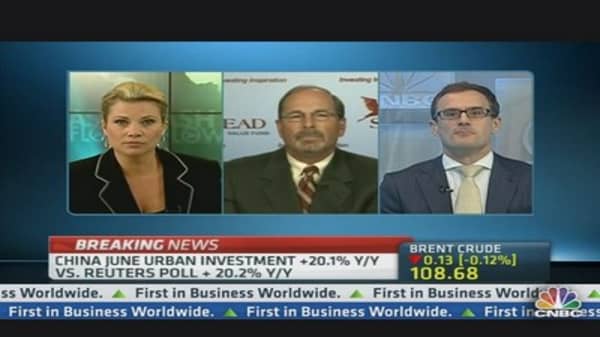China's economic growth in the second quarter of the year may not have slowed as much as some had feared, but a large degree of uncertainty about the outlook for the world's second biggest economy remains, strategists say.
Data on Monday showed the Chinese economy grew 7.5 percent year on year in the June quarter, in line with expectations, but down from 7.7 percent in first three months of the year to mark the second straight quarter of slowing growth.
"Who knows if 7.5 percent [growth] is sustainable? It really is a question of watching the data and where it stabilizes is what's important for the market," Simon Warner, head of macro markets at AMP Capital, told CNBC Asia's "Cash Flow."
(Read More: Just how low will China allow growth to go?)
"We have a real situation in China where nobody really knows where Chinese growth is going to settle down in the coming quarters," he added.
The China gross domestic product (GDP) data bought some relief to markets, which had braced for a weaker-than-forecast number after recent data sparked fears of a sharp slowdown in growth.
Asian stock markets were a touch firmer after the GDP release, while the China-data sensitive Australian dollar hit a session high of about $0.9109.
(Read More: Why aren't markets rallying over China's GDP?)


.530x298.jpg?v=1373852570)



